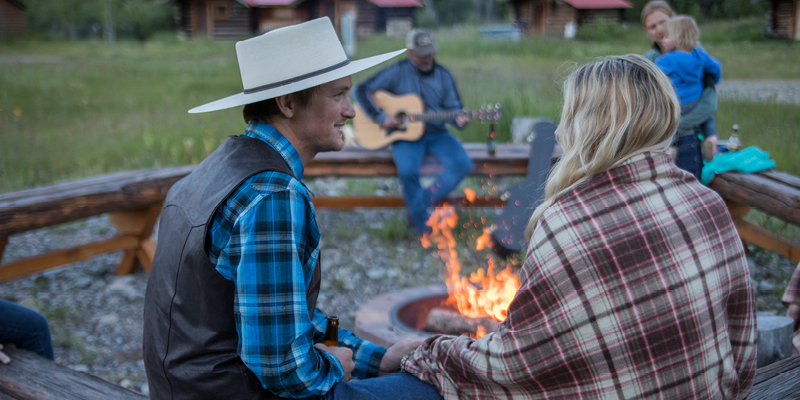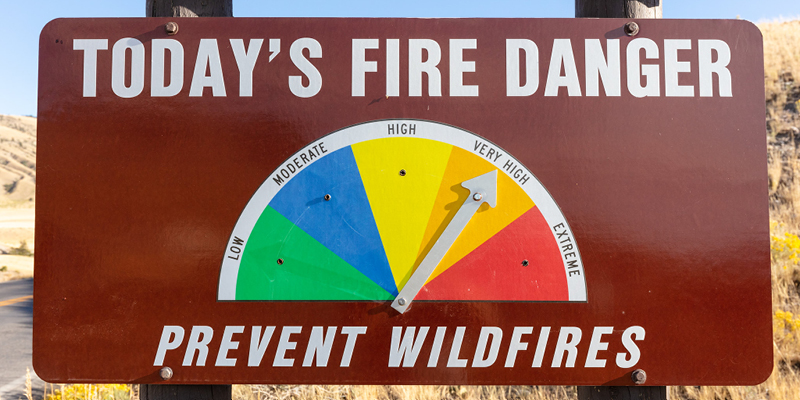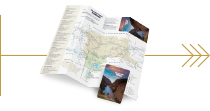Understanding Wildfires: History, Benefits, and Prevention Tips for Residents and Visitors in Yellowstone Country
 Making s'mores at Lewis Lake, Photo courtesy Yellowstone NPS
Making s'mores at Lewis Lake, Photo courtesy Yellowstone NPS
You may have seen on the news that Montana is battling many fires this summer. Fortunately, here in Yellowstone Country, there are only a few fires, and we have not faced larger fires as our neighboring regions. Residents in YC are very aware of fire danger and generally careful about protecting property and lives especially with dry, hot weather conditions like we’re experiencing.
Benefits of Wildfires
Although it seems counterintuitive, wildfires have some environmental benefits. They reduce the grass, brush and trees that can fuel large and severe wildfires, and they can improve wildlife habitats by encouraging the growth of grasses and wildflowers for food and cover.
History of Wildfire Management in Montana
When Montana first became a state, fires were disruptive to mining camps and communities, so the initial legislative body created territorial codes for fire protection, which included authorizing volunteer fire companies and ensuring every town had some form of organized fire protection.
However, little thought was given to the wildlands until The Great Fire of 1910, when a few small fires burned together due to high winds and burned 3 million acres across Northern Idaho, Western Montana, Eastern Washington, and parts of British Columbia. The fires killed 87 people, mostly firefighters, demolished structures and small towns, and destroyed an estimated $1 billion in timber, which would be worth $30 billion by today’s value. Timber was viewed as a significant asset, and this loss prompted public and private partnerships to formulate a plan.
 Sweet Grass Ranch, Big Timber. Photo by Taylar Robbins.
Sweet Grass Ranch, Big Timber. Photo by Taylar Robbins.
Collaborating to Mitigate Fire Damage
In 2009, the National Cohesive Wildland Fire Management Strategy came to fruition, an exceptional culmination of years of planning and work. The plan, a collaboration of agencies, focuses on three key components: resilient landscapes, fire-adapted communities, and safe and effective wildfire response.
However, the wildland fire management environment has changed over the past few decades. We now have longer fire seasons, more extensive fires with more acres burned each year, more extreme fire behavior, and wildfire suppression operations in wildland-urban interfaces have become the norm.
On a national level, restoring ecosystems includes thinning crowded forests and using prescribed fires on 2-3 million acres yearly. This can help prevent the buildup of flammable vegetation that feeds extreme wildfires.
 Fire Danger sign at Very High. Photo courtesy NPS / Jacob W. Frank.
Fire Danger sign at Very High. Photo courtesy NPS / Jacob W. Frank.
What You Can Do
As visitors and residents, there are things we can do to help mitigate wildfires. Check the regulations and be mindful of wind conditions before building a fire, always use a fire pit, keep fires small and under control, and put out all embers with water, sand, or dirt until they are cool to the touch. If you are pulling a trailer, be sure your chains are not dragging, which can cause a spark. Leave the fireworks at home (for a cool rainy day) 😉, and please be careful with anything flammable, particularly when the weather is hot and dry.
It takes everyone to keep our forest safe. Montana’s Yellowstone Country thanks you for doing your part.


